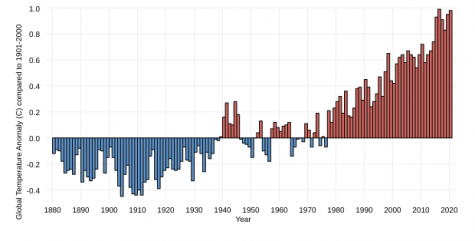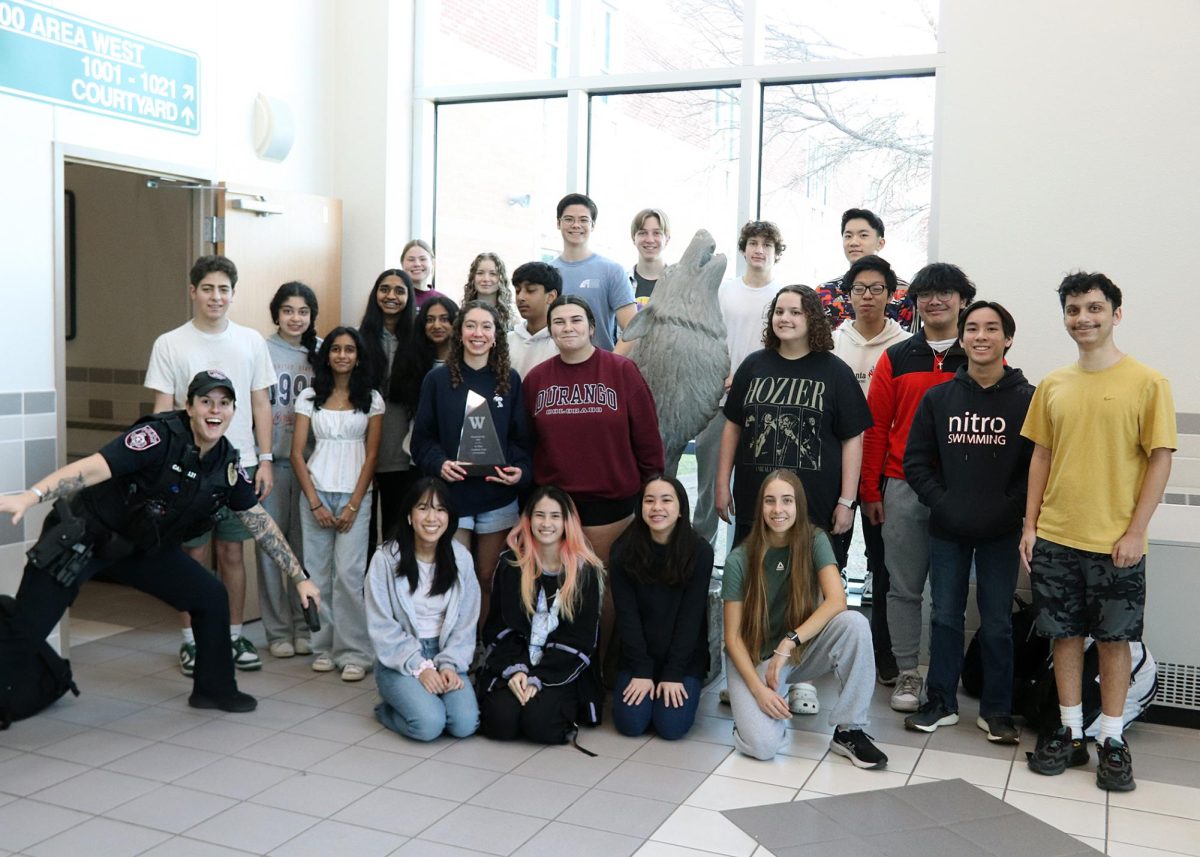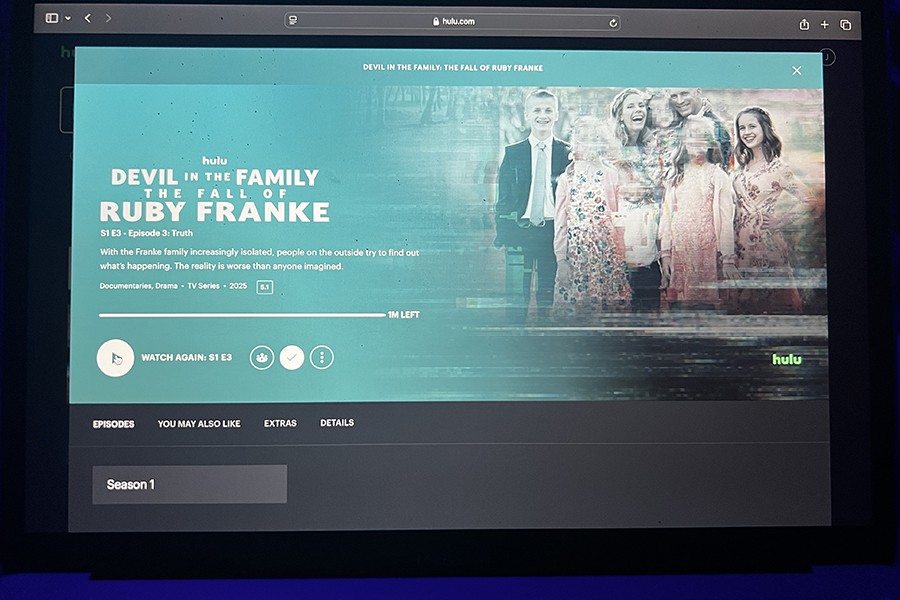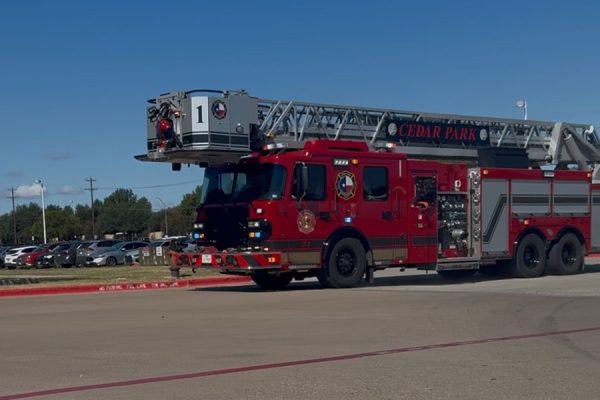The Current State of Climate Change
Updating Our Understanding of The Planet
Photo by Bill Oxford on Unsplash
Many countries have already made pledges to reduce their carbon footprint. In this year’s upcoming Glasgow conference, world leaders will discuss their plans to reduce their respective countries carbon footprint, according to the United Nations. And, according to Forbes, the world needs to reduce carbon footprint by 45% by 2030.
March 24, 2021
Despite what some may say or believe, climate change is real. And if the past 14 months have taught me anything, it’s that if a large threat is left unchecked, it can have disastrous consequences. That’s why it’s important to monitor climate change and its effects on our environment. More importantly, find a plan to handle this issue before it gets more out of hand.
That’s exactly what world leaders did at the UN general assembly in September 2020, according to BBC. World superpowers, such as China, a country that produces 28% of all greenhouse gases, have made a pledge to become carbon neutral by 2060. Additionally, 110 different countries also made plans for cutting back on emissions. BBC has stated that in total these countries represent 65% of carbon emissions.

While these declarations of change sound promising, until actual plans and details are released, there is no way to know for sure whether or not these changes will happen. According to Climate.gov, global temperatures have risen by about 0.13 degrees Fahrenheit per decade since 1880. They also stated that 2019 was the second warmest year to date.
But what does this mean for us? And why should we be worried? While the ice caps are the most well known consequences, they are just one of several devastating effects climate change will bring about. According to Nasa, increased temperatures will also mean hotter and more frequent heatwaves, which will have drastic effects on agriculture and ecosystems. In addition, warm weather will act as a catalyst for level four or even five hurricanes. These tropical storms are well known for their power to cause devastation across coastal cities all across the nation. Hurricane Harvey and hurricane Florence are just two examples of hurricanes directly caused by an increase in water temperature due to climate change, according to C2ES.
Still, there is still hope for the world to recover. As stated by Forbes, renewable energy is now the cheapest energy option. Previously renewable energy while effective, failed to draw in investors due to its high maintenance and installation cost. However, both solar and wind installments are now able to outcompete existing coal-powered plants. New developments have allowed wind and solar to be cheaper than fossil fuels in many cases. So cheap in fact, that while coal costs about $64.55 per kilowatt hour; a single wind plant can have operating costs of only $32.11 per kilowatt hour, according to Meic.
Progress like this is good news, but the struggle is still far from over. According to Price Foil, annual carbon emissions need to be reduced by 7.6% each year from 2020 to 2030. Moreover, renewable energy plants especially wind and solar require large amounts of land and proper siting in order to be effective, according to UCUSA. In addition, many of the nation’s power grids were meant to only accommodate fossil and coal which means more time, money and resources to make the switch.
All of this begs the question, what can we do as individuals right now that will have a lasting effect on our carbon footprint? The short answer would be to stop using up so much of everything. Americans count for 4% of the world’s population, but 12% of the world’s waste, making us one of the most wasteful countries in the world according to the NRDC. the New York Times suggests traveling less, cutting back on meat and dairy products, and turn off your in home appliances when they are not in use; these are just a few small changes that can keep keep our planet safe.



![Jumping off the ground, senior linebacker Bennett Patton snatches the ball out of the air for an interception at Thursday’s game against Chaparral. Patton had two interceptions in the 56-14 victory, tying the school record for interceptions in a game. “I was just playing the game,” Patton said. “[I’m] going to go into next week, forget about it and stay humble.” Photo by Harper Chapman](https://cphswolfpack.com/wp-content/uploads/2025/09/bennett-interception.jpg)
![The fire department came to the school after students were evacuated when smoke started coming from the ceiling of a classroom. All students and staff are safe. “All of my friends left their stuff too, so we couldn’t contact our parents, and it was stressful,” senior Brynn Fowler said. “It was scary because I didn’t know [what was going on], and I couldn’t find anyone because it was a big crowd.” Photo by Anthony Garcia](https://cphswolfpack.com/wp-content/uploads/2025/09/firetruck.jpg)


![Sitting with her friend senior Sohpia Struve at last year’s Austin City Limits Festival, senior Ava Zuniga poses for a picture under a pavilion. They are frequent attendees at ACL, an annual music festival at Zilker Park. “I would recommend seeing a bunch of people,” Zuniga said. “This past year, we camped out for Chappell [Roan] for a really long time. I think the whole point of ACL, [which] is a lot of fun, is that you can go see so many different people, even if you don’t know them. So by camping by one person, it really limits yourself from being able to go see a bunch of people.” Photo courtesy of Ava Zuniga](https://cphswolfpack.com/wp-content/uploads/2025/10/EE9E9484-FE6F-4AA0-B5F5-0C177AB32841-1200x857.jpeg)
![Broadcast, yearbook and newspaper combined for 66 Interscholastic League Press Conference awards this year. Yearbook won 43, newspaper won 14 and broadcast took home nine. “I think [the ILPC awards] are a great way to give the kids some acknowledgement for all of their hard work,” newspaper and yearbook adviser Paige Hert said. “They typically spend the year covering everyone else’s big moments, so it’s really cool for them to be celebrated so many times and in so many different ways.”](https://cphswolfpack.com/wp-content/uploads/2025/05/edited-ILPC.jpg)




![Looking down at his racket, junior Hasun Nguyen hits the green tennis ball. Hasun has played tennis since he was 9 years old, and he is on the varsity team. "I feel like it’s not really appreciated in America as much, but [tennis] is a really competitive and mentally challenging sport,” Nguyen said. “I’m really level-headed and can keep my cool during a match, and that helps me play a bit better under pressure.” Photo by Kyra Cox](https://cphswolfpack.com/wp-content/uploads/2025/09/hasun.jpg)


![Bringing her arm over her head and taking a quick breath, junior Lauren Lucas swims the final laps of the 500 freestyle at the regionals swimming competition on date. Lucas broke the school’s 18-year-old record for the 500 freestyle at regionals and again at state with a time of 4:58.63. “I’d had my eye on that 500 record since my freshman year, so I was really excited to see if I could get it at regionals or districts,” Lucas said. “ State is always a really fun experience and medaling for the first time was really great. It was a very very tight race, [so] I was a bit surprised [that I medaled]. [There were] a lot of fast girls at the meet in general, [and] it was like a dogfight back and forth, back and forth.” Photo by Kaydence Wilkinson](https://cphswolfpack.com/wp-content/uploads/2025/03/Kaydence-2.7-23-edit-2.jpg)
![As the support team sits and poses for a photo in the cafeteria with the counseling team they eagerly wait to start their day. "We [all] seem to be a team, I get up every day and there's days where I don't want to go to work today, but I'm thankful that I have a job and I'm blessed to have what I have," Christopherson said. Photo Courtesy of Julie Weltens.](https://cphswolfpack.com/wp-content/uploads/2025/01/AF9E8470-10D7-4C91-BF28-EC8F86BAB66C-1200x852.jpeg)
![Officer Stephanie Cash is in her second year as an SRO at CPHS. “Seeing [students] grow over the years has been kind of cool,” Officer Cash said. “Freshmen that [are] all over the place and then in the next couple of years get a little more squared away and go to class and do work and start thinking about the future. Being a part of a student's growth is the best way to measure my success as an SRO.” Photo Courtesy of Cedar Park Police Department's PIO, Alicia Gallagher.](https://cphswolfpack.com/wp-content/uploads/2024/12/CPHS-SRO-900x1200.jpg)
![As he sprints with the ball, senior running back Trae Hill breaks a tackle during Friday’s 35-14 loss against the Vandegrift Vipers. Hill ran for 135 yards and two touchdowns during the game. “[Scoring] was electric,” Hill said. “It always feels good to score, but the O-line did everything.”](https://cphswolfpack.com/wp-content/uploads/2025/09/IMG_0795allie.varfb_-1200x799.jpg)


























![The fire department came to the school after students were evacuated when smoke started coming from the ceiling of a classroom. All students and staff are safe. “All of my friends left their stuff too, so we couldn’t contact our parents, and it was stressful,” senior Brynn Fowler said. “It was scary because I didn’t know [what was going on], and I couldn’t find anyone because it was a big crowd.” Photo by Anthony Garcia](https://cphswolfpack.com/wp-content/uploads/2025/09/firetruck-300x200.jpg)

![Finishing her night out after attending a local concert, senior Grace Sauers smiles at the camera. She recently started a business, PrettySick, that takes photos as well as sells merch at local concert venues. Next year, she will attend Columbia Chicago College majoring in Graphic Design. “There's such a good communal scene because there [are] great venues in Austin,” Sauers said. “I'm gonna miss it in Austin, but I do know Chicago is good, it's not like I'm going to the middle of nowhere. I just have to find my footing again.” Photo Courtesy of Grace Sauers.](https://cphswolfpack.com/wp-content/uploads/2025/04/Grace-300x225.png)


